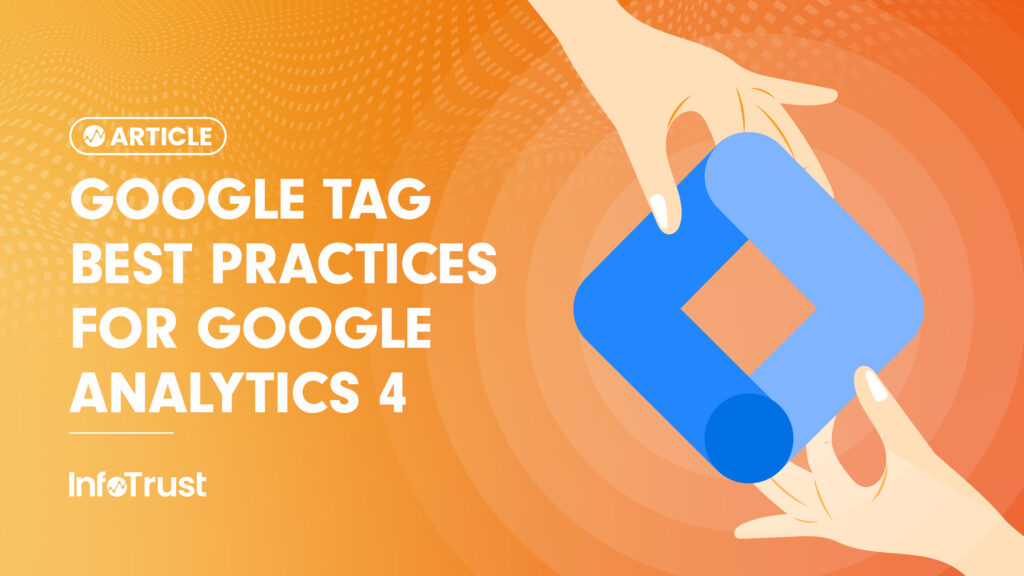
Michael Hugos is a co-founder of SCM Globe, which allows companies to refine their supply chains through modeling and simulations. A published author on supply chains and agile business strategy, Michael sat down with us to discuss how data is changing the game.
ML: Before we dive into the work you do, can you tell us a little about yourself and what you do?
MH: I am a Co-Founder of a supply chain modeling and simulation application called SCM Globe. I’ve spent the last couple of decades in that space where supply chains, information technology and business overlaps. Previously, I was the Chief Information Officer of a several-billion-dollar organization that distributed food service items, restaurant supplies and cleaning products across the country. In my career I’ve switched back and forth between corporate and consulting jobs. I’m also the author of a book called Essentials of Supply Chain Management, which is reported by Amazon as the best-selling book on supply chains worldwide. It is presently in its third edition.
ML: Fantastic. Let’s talk about SCM Globe. What served as your inspiration?
MH: It actually started in my previous position, where I was the Chief Information Officer and was facing a big business challenge. The holiday season was always a busy time for us. In particular, one of our biggest customers always came out with specially branded products for the holidays. People at the headquarters of that company would look at their computer systems, watch the numbers, and tell everyone in their supply chain what to do. Since we were the distributors in that supply chain, we took the manufacturers products and held them in our distribution centers. Then our trucks would move those products on a daily basis to that customer’s stores, there were about 4,500 of those stores. Since the stores didn’t have a lot of storage, we couldn’t send an 18-wheeler out there with supplies for a week. So our trucks were at their stores every day or every other day.
During the holiday season, we would try to make sure we used up the special holiday inventory without letting any of the customer’s stores run out. But, with a small group of experts watching the numbers and telling everyone else what to do, it didn’t work out the way it had been envisioned. Increasingly, as the season progressed, there would be sudden rush-orders, and we would have to air-freight paper cups from New York to Atlanta and stuff like that to keep the customer happy.
We were negotiating a new three-year-deal with this customer, and they said, “We want you to show us how you’re going to help reduce excess inventory on that holiday stuff by at least 50%.” In prior years, there had been more than half-a-million dollars’ worth of holiday product leftover. That was a big challenge and everyone turned to me because I was the IT guy and this seemed like an IT problem.
As they say, necessity is the mother of invention. What we came up with ties back to the whole idea of analytics. Everyone who needs to know what’s going on in a situation should actually be able to see what’s going on. And that means more than just a few people at headquarters. In that supply chain there were actually several hundred people who needed to know what was going on. What I did was I let everybody see what was happening as it happened, and we found that people could figure out on their own what to do without needing to be told what to do. It worked really well and we reduced excess inventory by more than 50% that holiday season. The customer loved it and gave us a new contract; said keep doing what we were doing all year around, not just during the holiday season. That gave me an idea which has since evolved and become SCM Globe.
With SCM Globe, we really work on expanding visibility and analytics. We allow people to take the data and investigate it in real-time and say, “What is this? What is that?” People really get drawn into a process where they understand how the supply chain is working, and then they work together to make it better.
What we’re doing is modeling a supply chain with data on four main entities: Products, facilities, vehicles and routes. Of course, you can have many different kinds of those entities, and you can combine them in an infinite number of ways. And yet, using only those four entities, you can accurately model any supply chain anywhere in the world. You can explore different ways of configuring the four entities to design a supply chain. You set up a particular combination and press the “Simulation” button. Then SCM Globe simulates how the four entities interact and shows you, day-by-day, what’s going on. You can check statuses at different facilities by clicking on them.
ML: With that in mind, when your organization works with clients, how do you show and measure your impact on their organization?
MH: Our entire user interface is map-based, so we make sure people understand the larger context and integrate what they’re seeing. With different streams of data, you are being shown different views. There’s an old saying that there are three kinds of lies: Lies, damn lies and statistics. The problem with statistics is often people can be looking at perfectly good and accurate data, but only see one view. So they choose their favorite statistics to prove whatever they want, but doing this isn’t good if you’re running a business. You need to see statistics in a big picture context. We’ve really worked on using a holistic way to view the data, especially for our clients.
ML: As you’ve worked with organizations, do you have a list of common mistakes companies make with their supply chain or supply chain analytics?
MH: A common mistake I see, not just in supply chains but in general, is a failure to see the obvious or the simple answers. There is a popular book I recommend to people called The Goal by Eliyahu Goldratt, where he talks about manufacturing. Supply chains are not exactly like manufacturing, but to some degree one could say a supply chain is like a factory spread around the world. Many of the insights from reading The Goal are relevant in supply chain management. The book shows you things so profoundly obvious that none of us had seen them before we read the book. Then when you finally see it, you say, “My God, why didn’t I see that two years ago, ten years ago, or whatever?” Don’t worry, better late than never.
ML: In terms of the supply chain industry, what do you think is the future? Do you think data will play a role?
MH: Data will become ever more important. The question will be: What do we do with it? I think there is a longstanding human tradition to try to outsource all of the smarts and decision making to computers. Heaven knows I love computers, but I’m not crazy about outsourcing the essential decision making to a computer. When you need data, computers should display data in a meaningful manner, rather than just a column of numbers so you can understand what the data means.
When you integrate computers into a business process, I believe you should automate the routine stuff. You automate all the collection, storing, retrieval and visualization of data. Computers do that really well. Then, you should put human beings in the loop, use real intelligence, not just artificial intelligence. If everyone can see what’s going on, and can see it in a meaningful way, then people can make good decisions. When you combine real-time analytics with empowered people who can see what’s going on and who truly understand, that’s how you create value. That’s how supply chains are going to succeed. I do not believe we are going to have computers with all kinds of AI algorithms just buzzing away, doing everything, and figuring everything out all on their own.
ML: I’ve been using newer tools, some of which focus on predictive analytics and machine learning, and they show quite a bit of promise.
MH: They absolutely do, and I’m a fan of predictive analytics up to a point. But if they really work that well, then I would use predictive analytics to figure out where the stock market is going. I would make a pile of money overnight, and then buy an island in the Bahamas and retire. Obviously, I can’t do that. If predictive analytics were so great, they would tell us all what to do. And if that was the case, I’m not sure what people would do, or even why they would be necessary any more. That’s where I don’t buy into the notion that AI and predictive analytics are going to solve all our problems.
As you get out into the world, certainly in supply chains, people say, “My tier one suppliers are all connected up electronically with me.” I’m sure they are, they’re tier one suppliers. But with most supply chains, the tier one suppliers account for what, maybe 20 to 30% of the total activity? Who are the suppliers of those tier one suppliers? And who are their suppliers? Most companies are not connected with multi-million dollar ERP systems that are rapidly flashing data back and forth to each other. Most companies are doing the best they can with what they have. And they’re not going to be spending a billion dollars on computer systems. Period. End of story.
ML: Do you think that will evolve over time?
MH: No, I don’t think that will change. ERP systems are fine up to a point. Heaven knows, I’ve installed my share of them. They’re complex, and they’re expensive. And complexity is like a fish net: It will wrap around you, drag you down and drown you. If you think I’m kidding, think about how many supply chain and IT professionals have spent way too much money and way too much time installing some fine piece of technology that never really worked. At the end of the day, millions of dollars were sunk into those projects and everyone agreed to just move on and not talk about it. ERP systems are getting better as they go to the cloud, but that’s because they have to be. In the cloud, people expect simplicity. But the training for these ERP systems is still complex and expensive. The first group of people trained is then supposed to train the rest, but often they don’t because they leave to go to other companies. Then no one really knows what’s going on or how to use the new systems.
ML: As the technology becomes easier to use and develops, more companies will move towards these types of systems. It might not happen overnight, but it seems like this is a natural trajectory over twenty to thirty years, wouldn’t you agree?
MH: I agree, but I don’t think systems will ever become so sophisticated they make people obsolete. At the end of the day, what a lot of people need is good data in a timely manner, rather than a ton of complex data. Most managers, such as plant and distribution managers, work with a handful from two to six variables, and rarely more than that. They watch those variables every day, every week, every month. That’s how they steer the ship. Everyone has a handful of key indicators they watch and want to see all the time. Stock traders do this. They work in a world filled with data, yet mostly watch just four or five key things.
ML: One more question for you. What recommendations would you give everyone on what not to do in the world of supply chain?
MH: I would say that human beings are like the sorcerer’s apprentice in Walt Disney’s movie Fantasia. After a while, we begin to think, “I know how to do this. I can give the commands like the sorcerer does.” Then, like Mickey Mouse in the movie, we start fooling with things we don’t really understand. Finally, by the time the sorcerer returns, everything is utterly and totally out of control.
I would say that, as we plunge into a world which is clearly going faster and becoming more complex, it’s important to remember we don’t necessarily need more and more complex solutions. We are only the sorcerer’s apprentices, not the sorcerer. So look for elegantly simple solutions. Elegantly simple does not mean simple-minded. And it does not mean you believe in magic. It means you look underneath the apparent complexity on the surface and find the underlying patterns. That takes time. We should try to be more mindful. Try to settle down, take a deep breath, and look for the simple patterns underneath, and then find simple solutions that give you what you need. It’s hard to see the simple and the obvious, but they are there and if you find them they provide the most value.
Resources
More information about Michael can be found on his personal website. You can also check out his books (and snag some awesome business insight!).










